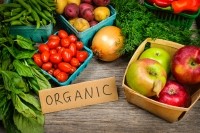What's on our editorial calendar in 2017?

SPECIAL EDITIONS 2017
- JANUARY– Sugar Reduction
- FEBRUARY– Reformulation: Technical challenges of cutting calories
- MARCH – Flavour, colour & texture trends
- APRIL – Fats & oils: Health scares and contaminants, consumer confusion, opportunities for specialty oils
- MAY – Eastern Europe: regulation, NPD, trends, launches
- JUNE – Sustainability & Ethical labelling
- JULY – Private label trends
- JULY – IFT show, the highlights
- AUGUST – Alternative proteins
- SEPTEMBER – Food for kids – marketing, health, premiumisation
- OCTOBER – Organic and non GMO
- NOVEMBER – ‘Future gazing’ - pushing the boundaries of food
- DECEMBER – FIE post-show
- DECEMBER – Retail innovations
Sugar reduction
With rising rates of obesity and sugar’s health profile in the spotlight, consumers increasingly are seeking out reduced-sugar and reduced-calorie products. Some consumers are also sensitive to whether foods and beverages are 100% natural – while others are more concerned with calories alone.
We take stock of the sweeteners market, including the impact of natural sweeteners, and the regulatory and technical issues around formulating with sweeteners and sugar alternatives.
Reformulation: Technical challenges of cutting calories
This FoodNavigator special will explore how companies can best marshal resources to keep up a healthy pipeline of new products that meet consumers’ short, medium and long-term needs. How can manufacturers improve their NPD processes to achieve a better return on investment and bring more genuinely healthy products to market?
Is stealth health the best approach to take or should reformulation efforts be proclaimed loud and proud?
Do taxes on sugar-sweetened beverages encourage companies to cut sugar or have they simply passed the cost into consumers?
We’ll also talk to experts from Europe’s most innovative food companies that have reformulated their products to make them healthier, and ask them the secret to their success.
Flavour, colour & texture trends
Texture, colour and mouthfeel often influence consumer perception of foods and drinks as much as flavour, and are elements that manufacturers need to bear in mind at the very beginning of reformulation projects and new product development.
But how much do they interact and influence each other, and to what extent can manufacturers stray from established expectations before alienating consumers?
Black vodka, spicy chocolate and multi-coloured crisps have already been tried and tested – but can they ever go beyond the novelty factor? And what will the next big trends be?
Fats and oils: Health scares & contaminants, consumer confusion, opportunities for specialty oils
Fats have long been branded ‘good’ or ‘bad’. But do consumers know which are which, and how can manufacturers help increase consumption of the healthier varieties, such as monounsaturated and polyunsaturated fats?
And with increasing numbers of scientists challenging the idea that saturated fats are unhealthy, what does this mean for most national dietary
guidelines which advise people to avoid them?
Campaigners and politicians continue to call for a legal limit to trans-fat levels – but with firms voluntarily reducing their use of industrial trans fats, is this necessary?
Meanwhile palm oil’s reputation for environmental and health reasons seems to go from bad to worse. Can it ever be a healthy, sustainable choice?
And then there’s the next generation of healthy oils, from SDA-rich soybean oil to new high oleic vegetable oils from novel sources such as microalgae. But will concerns over GM ingredients thwart their progress in Europe?
We also look at the opportunities for cold-pressed, artisanal and specialty oils.
Eastern Europe: regulation, NPD, trends, launches
Poland has been hailed as Eastern Europe’s innovation testing ground but which other countries are hot on its heels?
What are the most innovative recent food and drink launches in the region? What are the regulatory hurdles and marketing challenges? And is the practice of dual quality produce – where manufacturers sell poorer quality and unhealthier food in Eastern Europe - still a problem?
Meanwhile EU sanctions against Russia look set to continue. We take a look at the impact on the Russian food industry and see how manufacturers have overcome difficulties sourcing certain ingredients.
Sustainability & ethical labelling
How can you make your supply chain truly sustainable? Which ingredients are suspect from a sustainable sourcing perspective? What are the benefits and pitfalls of sustainability scoreboards that ‘name and shame’ or ‘name and fame’ companies? Which companies are guilty of greenwashing and when has it backfired?
From Fairtrade to RSPO- and MSC-certified, there are literally hundreds of eco-labels vying for consumers’ attention. Is certification still the best way to stand out from the crowd, or are there better ways to communicate your company’s human rights, animal welfare, and eco-credentials?
Private label trends
Retailers are able to instantly determine the success of their new product simply by registering how quickly it sells, turning every supermarket into an
NPD marketing lab and transforming private label into an innovative and dynamic category.
So how can manufacturers compete with supermarket’s own brand products that are increasingly encroaching their market share?
Why are private label brands so successful in some European countries but not others – and what opportunities does this present?
We also look at the food categories where private label innovation has outpaced traditional food manufacturers, such as organic, and talk to retail analysts, brand strategists and food marketers to predict Europe’s private label trends.
IFT show highlights
In 2017 IFT will be in Las Vegas, Nevada bringing together over 1000 exhibitors, 100 scientific sessions and 20,000 visitors.
The FoodNavigator team will be there in force, reporting on the biggest food ingredient innovations, the latest market trends and cutting-edge food science and the most important regulatory developments.
Alternative proteins
Much has been written about cultured meat but when will it have the mass-market share to be considered a truly disruptive innovation? What are the formulation challenges of micro-algae, pulses, insects and soy, and how easily can they be sourced? Is 2017 the year carbon footprint labels start to catch on?
And with so many ‘consumer types’ – flexitarians, meat reducers, vegans, vegetarians and ethical meat lovers – we ask who is buying alternative proteins anyway and can food firms appeal to them all?
We also take a look at the regulatory status of novel proteins in Europe such as insects and lab-grown meat.
Food for kids – marketing, health, premiumisation
Many European children consume too much sugar and salt and not enough fruit, vegetables or fibre. The industry is under pressure to address these problems, but what is the recipe for a successful children’s drink, snack or meal?
Meanwhile manufacturers of food for children need to market their products to two very different consumers – the kids themselves, for whom taste is king, and the parents who are health- and price-conscious.
Organic & non-GMO
Choosing organic food has become synonymous with health and environmental consciousness – but how accurate is this perception? Is the organic consumer making a lifestyle choice more than a health choice? Is organic always the most environmentally friendly option?
And will non-GMO labelling on certain foods become more commonplace in Europe as consumers turn away from meat and dairy from animals that were raised on genetically-modified feed, such as soy?
For which ingredients is it still difficult to source organic versions? And which product categories show the greatest potential among organic consumers?
‘Future gazing’ - pushing the boundaries of food
From fruit and vegetables grown on Martian soil to DNA diets; and from 3D printed food to the next-generation vegetable burger that ‘bleeds’ like its
meaty counterpart, we look at some of the ways food technologists, scientists and innovators are changing the what and how we eat.
With seven billion mouths to feed with a fixed amount of resources, pushing the boundaries of food is perhaps one of the biggest challenges the planet faces.
FIE pre- & post-show
Food Ingredients Europe, or FIE, is the biggest food ingredients show in Europe, where global scientists and business leaders get together to shape the future of food.
If you’d like to stay up to speed with what's happening at the cutting edge of food science, technology and product development, this FoodNavigator preview of what to look out for at FIE will help you make the most of your trip.
Retail innovations
Forget supermarket trolleys and queues at the checkout. Consumers are increasingly buying fresh and packaged food online and it is being delivered to their door in record speed by drones.
Some European countries have shown resistance to e-commerce such as Amazon Dash but is the changing face of the retail landscape inevitable?
What does this mean for the traditional retail sector and how can food manufacturers be a part of this trend?
ONLINE EVENTSSugar reduction & sweeteners
Food and beverage manufacturers around the world are looking for ways to cut sugar in their products, particularly as the health effects of excess sugar are increasingly questioned.
The trend for low- and no-sugar items has extended well beyond ‘diet’ and ‘light’ soft drinks, to yoghurts and desserts, tooth-friendly gums and sweets, diabetic-friendly baked goods, and even reduced sugar soups, sauces and ketchup.
The drivers for these trends are diverse. Sugar policy has kept prices relatively high in some markets, particularly Europe and the United States, while the Chinese government is keen to remain self-sufficient in sugar and is looking at a suite of measures to sate its country’s increasing appetite for the sweet stuff.
Meanwhile, many parents are concerned about the amount of sugar in their children’s diets but are often looking for sweet alternatives that are free from artificial ingredients too.
But there are many challenges to reducing and replacing sugar in formulations – technical, regulatory and consumer-driven.
In this FoodNavigator online event, we look at the market for reduced sugar and zero-sugar products, how to deal with some of the technical challenges of sugar reduction, and areas food and beverage makers should be keeping an eye on for new opportunities.
Millennials
As the largest generation since the Baby Boomers, Millennials are leaving their mark on the way we eat and shop for food.
This switched-on, plugged-in generation values natural and organic ingredients, local or sustainably-produced products and free-from foods. It is also increasingly wary of Big Food firms and its motives.
So how can the food industry, which has evolved to mass produce food in complex supply chains, appeal to millennials’ desire for personalised, authentic and artisanal food?
In this special edition FoodNavigator talks to brand strategists, market analysts, savvy start-ups and some Millennial consumers to find out more about the so-called ‘Generation Y’.
FACE TO FACEFood Vision
Every year, William Reed’s exclusive event, Food Vision, brings together senior-level thought leaders to discuss how the global food industry can harness scientific innovation to meet the demands of the health conscious consumer.
Taking place in London from 1-3 March this year, Food Vision is a senior-level industry event now in its fifth year. Over three days, the food industry’s brightest innovators, strategists and analysts discuss market challenges, business opportunities and what today’s consumers really want in a series of presentations, debates and round-table discussions.
GET IN CONTACT!
If you want to get involved with the editorial content of any of these specials, please drop a line to Niamh Michail Niamh.michail@wrbm.com or Will Chu will.chu@wrbm.com
------------------------------------
If you are interested in advertising on any of these specials, please drop Pierre Fetat a line: pierre.fetat@wrbm.com .



























